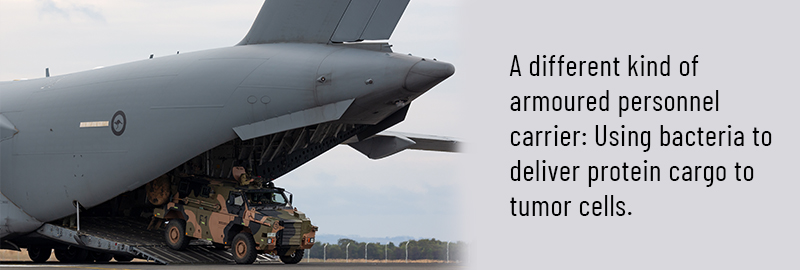 Intracellular Delivery of Protein Drugs
Intracellular Delivery of Protein Drugs
Intracellular protein delivery is a daunting task that is near impossible due to the size and surface charge of proteins. However, protein macromolecule delivery is used in numerous disease states, such as monoclonal antibody therapeutics for cancer, autoimmune diseases, or asthma as well as the delivery of recombinant insulin to treat type I and II diabetes. However, the administered protein therapeutics mechanism of action is either in the bloodstream neutralizing cytokines and other secondary messenger molecules or binding to cell surface receptors activating downstream signaling cascades of their intended cellular target. The ability to deliver proteins intracellularly opens many doors for novel and highly effective therapeutic interventions, especially cancer.
As of today, there are few methods to deliver proteins intracellularly. The techniques utilized involve delivering genetic material, either DNA or mRNA that the cell’s enzymatic machinery then uses to produce the intended protein. These methods, unfortunately, are expensive and can have many off-target sides effects affecting health organs and tissues. Recently, scientists from the University of Massachusetts have engineered a way to circumvent these pitfalls.
The researchers using a nonpathogenic therapeutic strain of Salmonella (Salmonella enterica serovar Typhimurium), have utilized the bacteria’s natural invasion mechanism to deliver protein cargo into tumor cells. The scientists engineered specific genetic circuits to drive invasion by activating the flhDC gene (increasing cellular invasion efficiency over 500 times) and inducing lysis (PsseJ-LysE) within the targeted cells in order to release the protein cargo intracellularly. To ensure autonomous lysing and the release of the protein cargo, they identified the SP12 promoter that is triggered intracellularly and is not active within extracellular environments. They incorporated the SP12 promoter into an engineered plasmid containing the PsseJ-LysE gene needed to promote bacterial cell lysis.
The autonomous lysis trigger after invasion into the cancer cells avoids the issue of off-target side effects and makes the delivery platform self-limiting; thus, preventing damage to healthy organs and tissues.
A caspase cytotoxic protein (CT Casp-3) was engineered into the plasmid, and whose target is exclusively intracellular in order to demonstrate the bacteria’s therapeutic efficacy. Using a mouse model to confirm therapeutic utility, bacteria expressing CT Casp-3 were intravenously injected into the mice and showed efficacy against liver and triple-negative breast cancer after 14 days of treatment. Furthermore, CT Casp-3 expressing Salmonella inhibited the growth of established 4T1 metastases within the lung. This confirms that CT Casp-3 activates cellular apoptosis in cancer cells that normally turn off this pathway.
This study demonstrates the successful killing of cancer cells using genetically engineered bacteria as the protein-producing drug delivery system. It offers a novel approach to cancer targets that currently have no small-molecule therapeutic options.
Visit us at Axxiem.com